These must-read books continue to thrill readers today, decades after they were first published. How many are on your bookshelf?
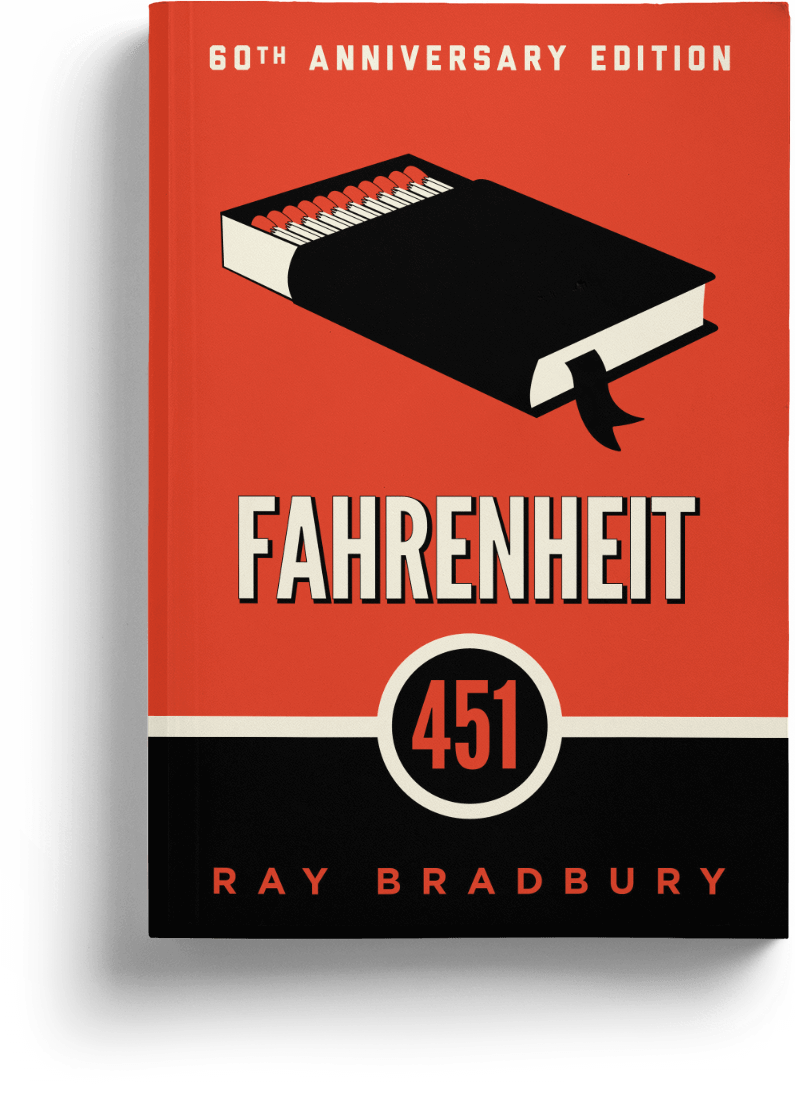
Fahrenheit 451
‘It was a pleasure to see things eaten, to see things blackened and changed. With the brass nozzle in his fists, with the great python spitting its venomous kerosene upon the world, the blood pounded in his head, and his hands were the hands of some amazing conductor playing all the symphonies of blazing and burning to bring down the tatters and charcoal ruins of history.’
Firemen don’t put fires out in this world where books are forbidden—they set them. Guy Montag works tirelessly to incinerate any books hidden in people’s homes and the homes themselves until he meets young Clarisse, a solitary late-night pedestrian who is quietly nonconformist. In a society where most spend their lives in front of giant television screens as books are burned, she questions why. Montag’s suppressed doubts about their destruction come to the surface, and he decides to find and fight to preserve the hidden world of printed knowledge that still survives. Where are the Book People?
“With more than 5 million copies in print, this is a glorious American classic everyone should read: It’s life-changing if you read it as a teen, and still stunning when you reread it as an adult. Censorship is at the core of the novel, which is both a literary thriller and a dark meditation on the future of humanity.” —Boston Globe
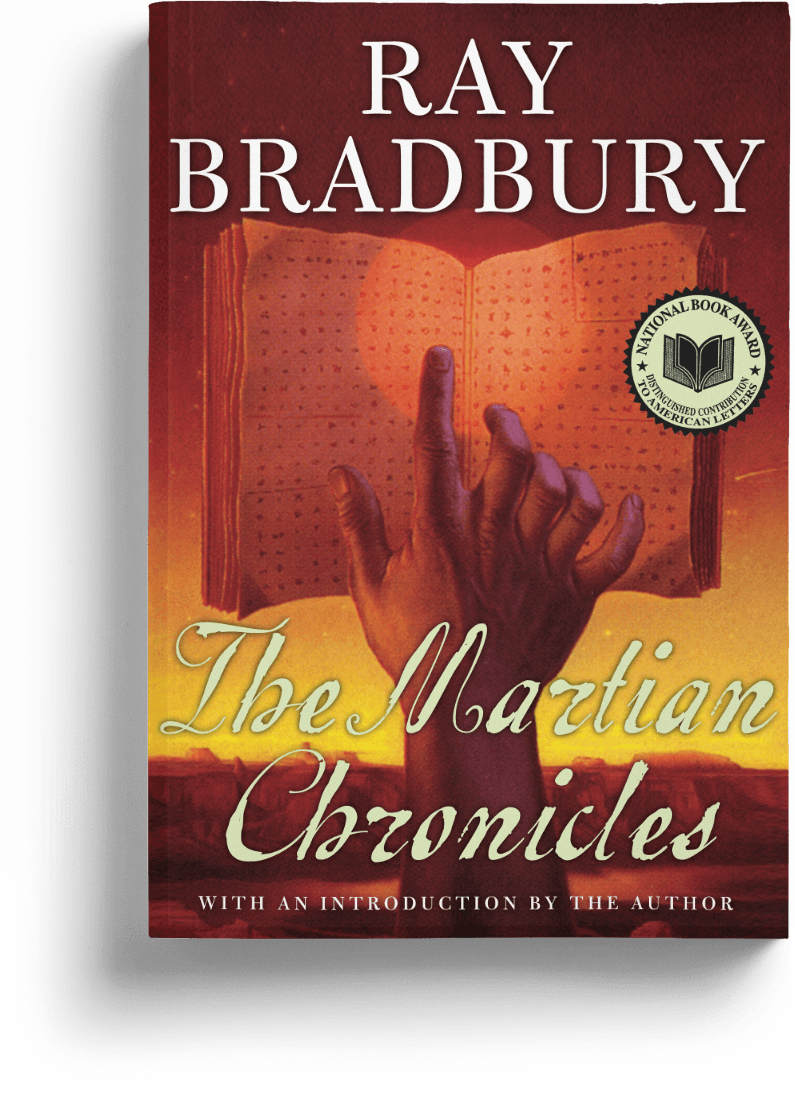
The Martian Chronicles
‘One minute it was Ohio winter, with doors closed, windows locked, the panes blind with frost, icicles fringing every roof, children skiing on slopes, housewives lumbering like great black bears in their furs along the icy streets.
And then a long wave of warmth crossed the small town. A flooding sea of hot air; it seemed as if someone had left a bakery door open. The heat pulsed among the cottages and bushes and children. The icicles dropped, shattering, to melt.
The rocket made climates, and summer lay for a brief moment upon the land.’
These story-chapters form a pioneering saga of the next great frontier—the colonization of Mars—opening with a rocket’s flames heating up an Ohio winter in January 1999 and closing with a family fishing trip to Mars in October 2026. Earth’s explorers find great wonders on the planet, but they also encounter countless terrors. Successive waves of contact and settlement missions all but destroy the elusive Martians, until war on Earth pulls almost everyone home. Humanity will get a second chance on Mars, but it’s only for those who will conserve rather than exploit this new world.
“Bradbury’s second book . . . a number of short pieces to produce a whole far greater than its parts. . . . In that melancholy classic . . . Bradbury’s prose was correspondingly lyrical and wistful; the book itself unforgettable.” —The Washington Post
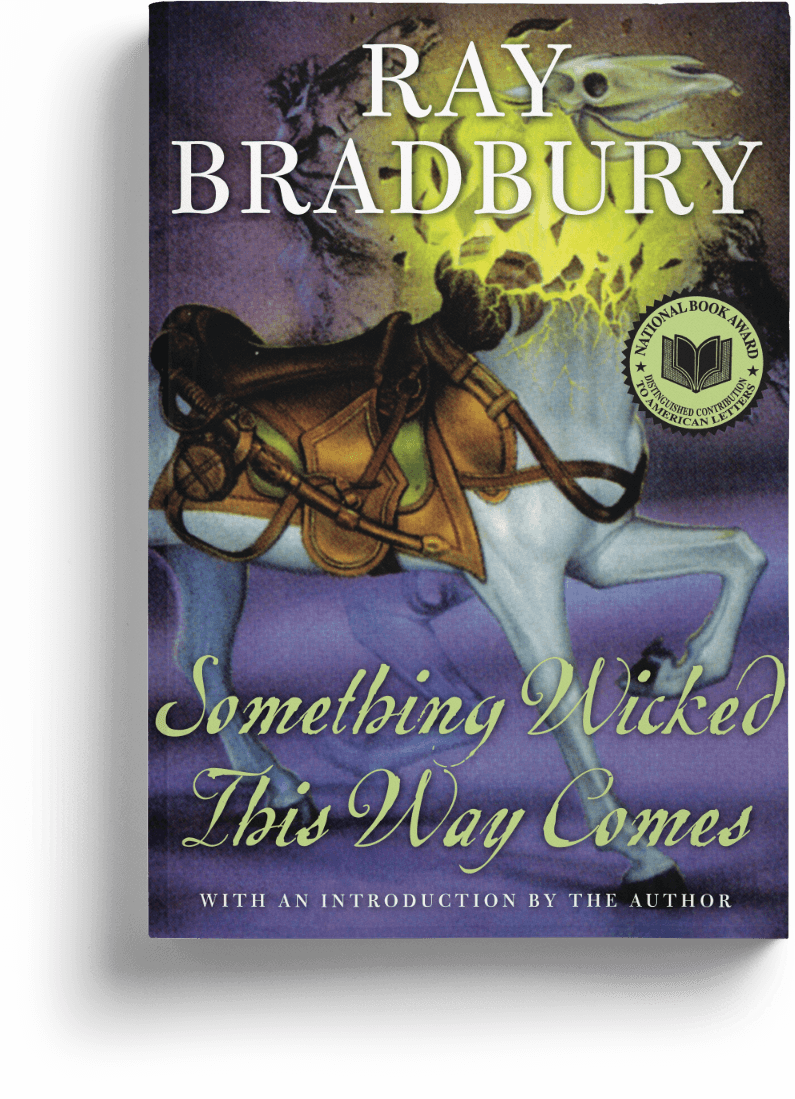
Something Wicked This Way Comes
‘Watching the boys vanish away, Charles Halloway suppressed a sudden urge to run with them, make the pack. He knew what the wind was doing to them, where it was taking them, to all the secret places that were never so secret again in life. Somewhere in him, a shadow turned mournfully over. You had to run with a night like this, so the sadness could not hurt.’
It’s autumn, and a mysterious carnival arrives in Green Town, Illinois. Neighbors Will and Jim, two young boys whose birthdays fall on either side of Halloween, are fascinated that the carnival arrives out of season in the middle of the night, offering rides and sideshows with hidden horrors. One of the proprietors can adjust the carousel to change his age; the other, Mr. Dark, is an illustrated man whose body art has strange powers. When Will’s father realizes the true insidious nature of the carnival, it takes the wits of both father and son to end the carnival’s predatory cycle of dread.
“The allusions (the October country, the autumn people, etc.) as well as the concerns of previous books will be familiar to Bradbury’s readers as once again this conjurer limns a haunted landscape in an allegory of good and evil. Definitely for all admirers.” —Kirkus Review
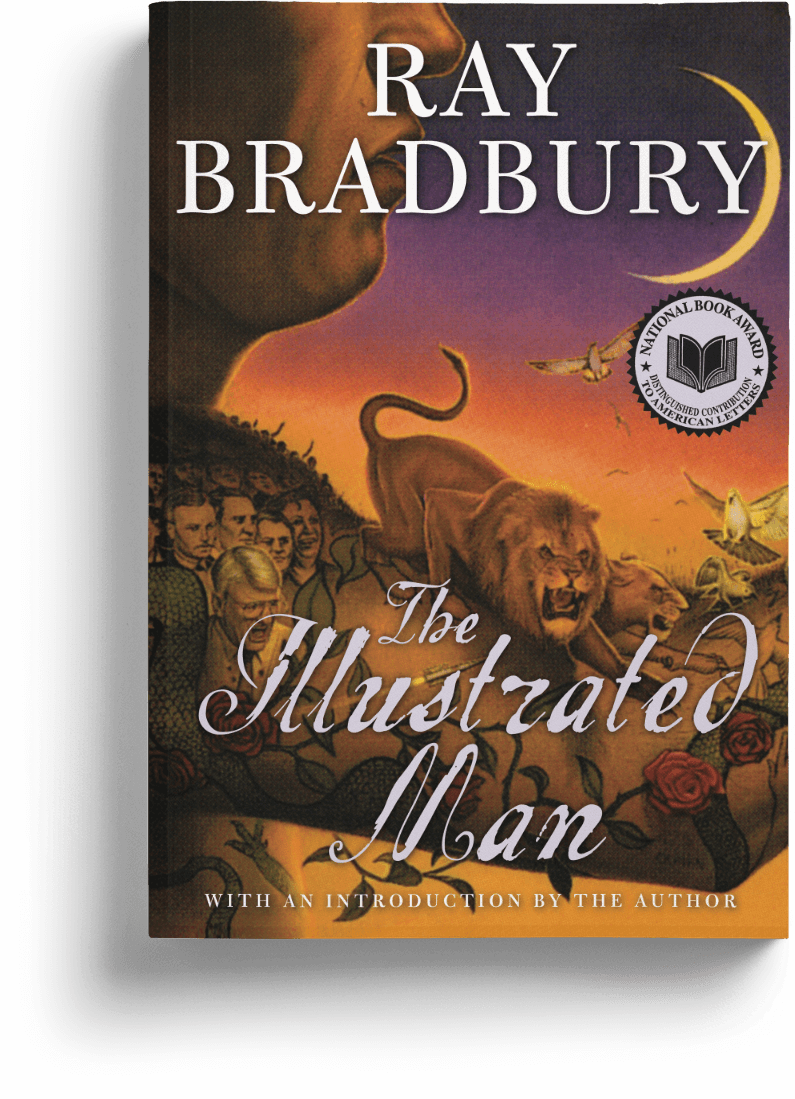
The Illustrated Man
‘The pictures were moving, each in its turn, each for a brief minute or two. There in the moonlight, with the tiny tinkling thoughts and the distant sea voices, it seemed, each little drama was enacted. Whether it took an hour or three hours for the dramas to finish, it would be hard to say. I only know that I lay fascinated and did not move while the stars wheeled in the sky.’
If you stare long enough at the Illustrated Man, each of his tattoos begins to spin a story—as the night progresses, each one comes alive with equal parts of wonder and terror. Together they represent many of Bradbury’s early and most well-known tales, including stories of Mars, a story of Venus, and glimpses into the far future. What happens when children learn to control their virtual reality nursery? How do you prepare for the last night of the world? Exploring a living canvas with Bradbury as the guide opens out into an exploration of the human condition—that, in itself, is an absolute thrill.
“Deftly plotted, beautifully written, characterized by protagonists who are intensely real. . . . There is no writer quite like Ray Bradbury.” —The New York Times
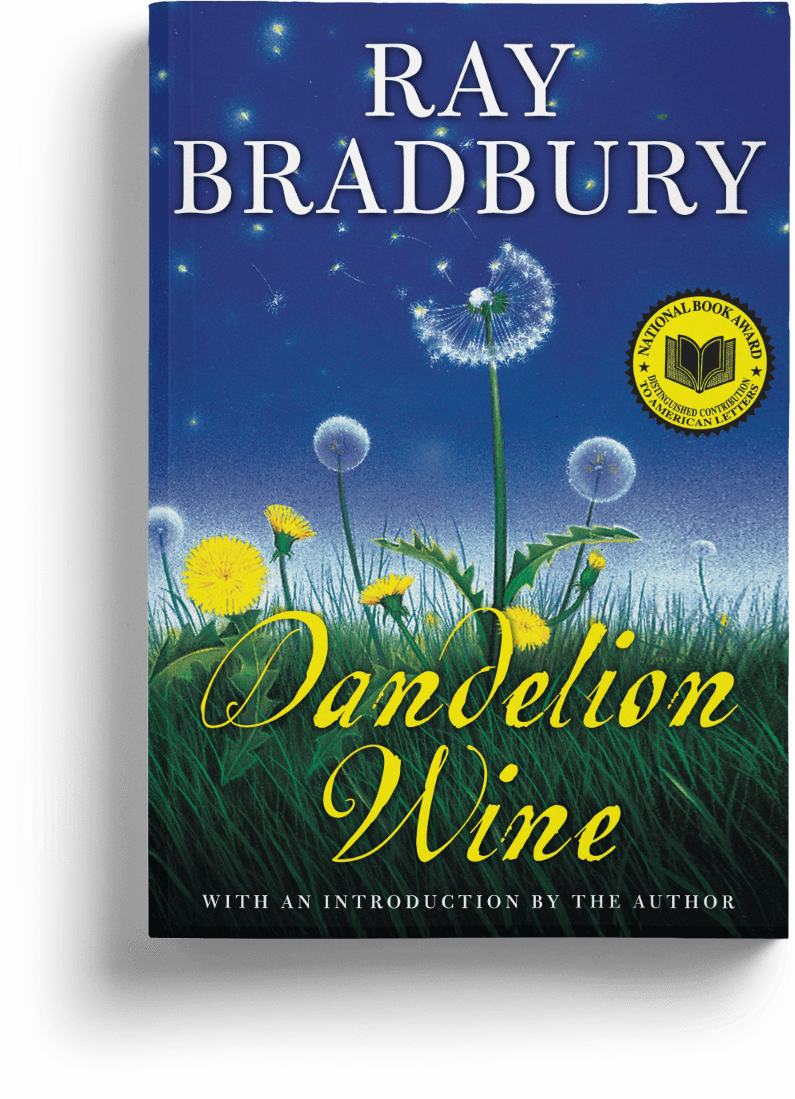
Dandelion Wine
‘A whole summer ahead to cross off the calendar, day by day. Like the goddess Siva in the travel books, he saw his hands jump everywhere, pluck sour apples, peaches, and midnight plums. He would be clothed in trees and bushes and rivers. He would freeze, gladly, in the hoarfrosted icehouse door.’
Vacation begins with great promise for 12-year-old Douglas Spaulding. It’s 1928, and all the summer joys of Green Town, Illinois, are ready to be savored. As some of the great promises of summer unexpectedly turn into even greater disappointments, the simple joys of childhood start to fade and the passions that lie beyond the world of innocence are gradually revealed: love, sadness, and the struggle to hold onto the past. The ravine that winds its way through the town symbolizes all of these challenges—a special place of adventure as well as misfortune, as temperatures rise.
“Bradbury learned long ago that amidst the joy, there is also evil in the world and in the hearts of men.” —The National Review
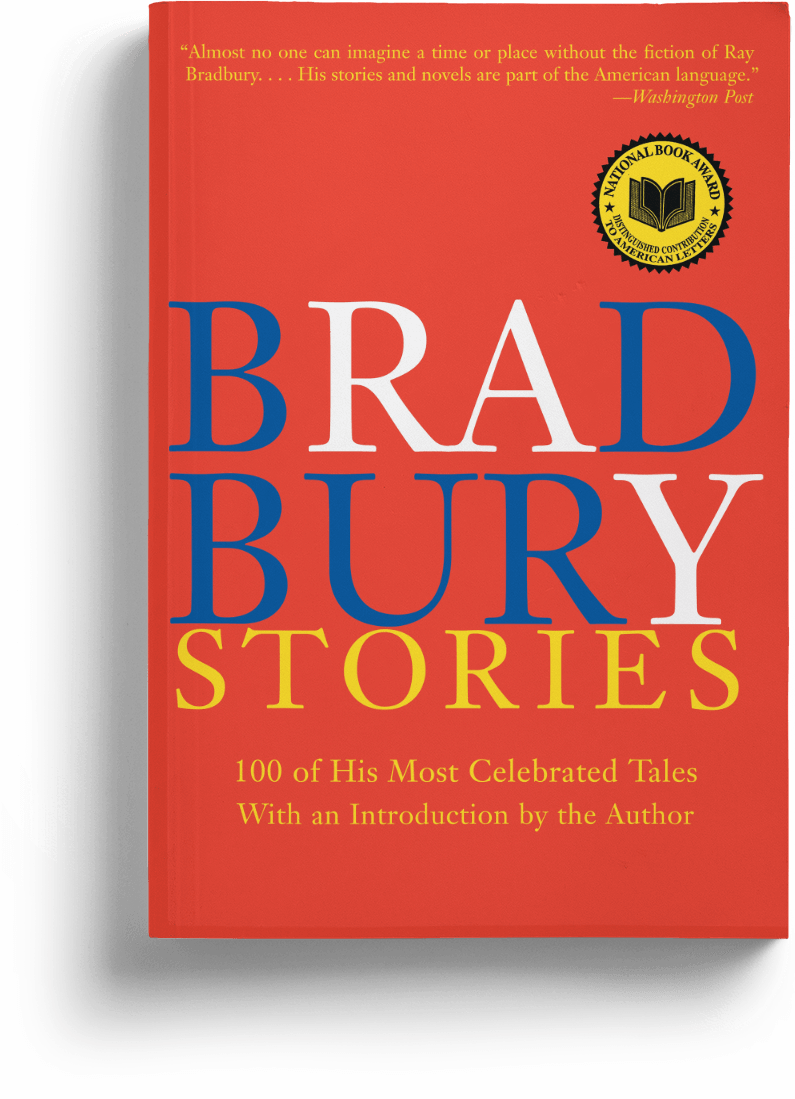
Bradbury Stories
‘She stood on the edge of the one hundred and thirteen steps that went down the steep hill and then across the bridge seventy yards and up the hills leading to Park Street. And only one lantern to see by. Three minutes from now, she thought, I’ll be putting my key in my house door. Nothing can happen in just one hundred eighty seconds.’
There is magic in the 100 short stories Bradbury chose for this volume: the marvels of interstellar flight, a conspiracy of insects, the early bloom of love in the warmth of August, with characters as colorfully unique as a poker chip hand-painted by a gifted artist, or the night games of a hateful embalmer. Spanning six decades, this is Bradbury at his very best—golden visions of tomorrow, poetic memories of yesterday, dark nightmares, and glorious dreams—a grand literary celebration of a master writer.
“He wrote beautifully enough for adults and clearly enough for kids. He didn’t give a damn if the literary lions accepted him. . . . He wrote in any and every genre, including poetry. He faced the parts of human nature most people don’t see even in their nightmares. . . . He was the shape of things to come.” —TIME
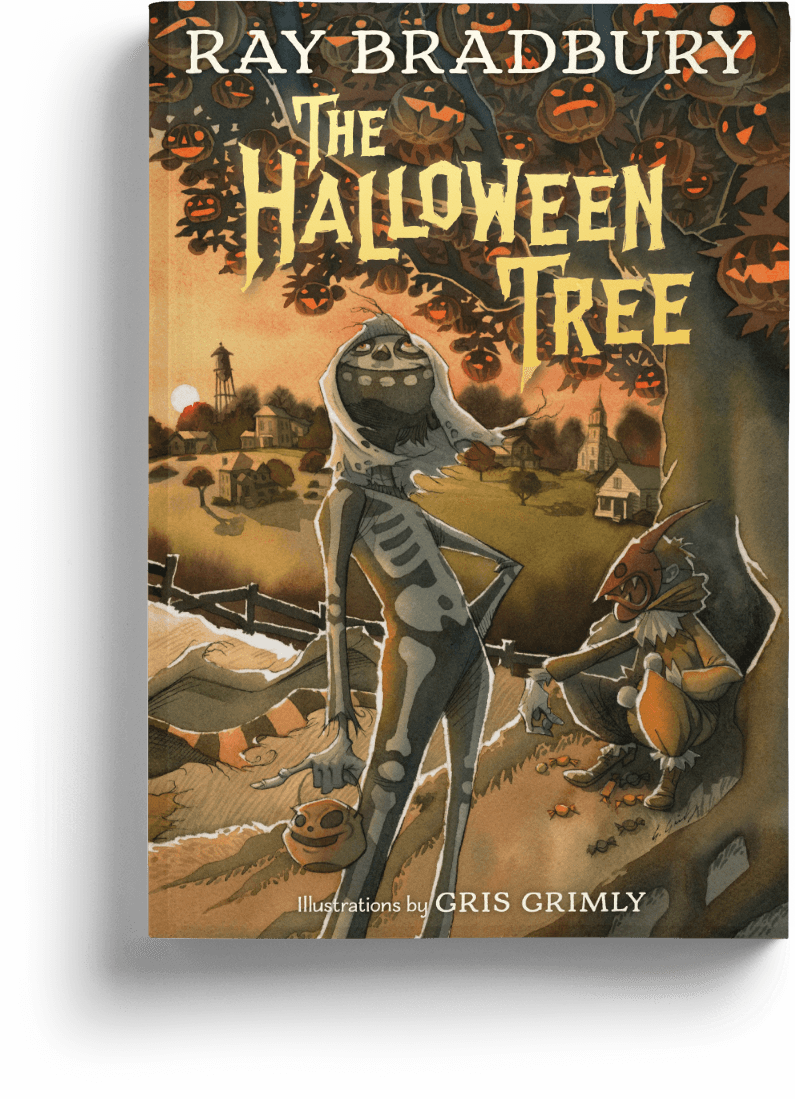
The Halloween Tree
‘Joe Pipkin was the greatest boy who ever lived. . . . The jolliest boy who ever hunted out all the haunted houses in town, which are hard to find, and came back to report on them. . . . The day Joe Pipkin was born all the Orange Crush and Nehi soda bottles in the world fizzed over; and joyful bees swarmed countrysides to sting maiden ladies.’
A band of young costumed trick-or-treaters setting out on Halloween find that their leader, Joe Pipkin, is having an emergency appendectomy. They soon discover the Halloween Tree, where Mr. Moundshroud, perhaps a personification of death, is about to harvest Pipkin’s jack-o-lantern. He takes the children with him back in time to learn the histories behind their individual costumes as they seek to help their dear friend. In the process, they just might have a chance to save him.
“Born of an idea shared with cartooning legend Chuck Jones . . . this novella explores the roots of Halloween in a time-and-globe-spanning adventure that’s both fun and still tattooed with Bradbury’s signature shadow.” —WIRED
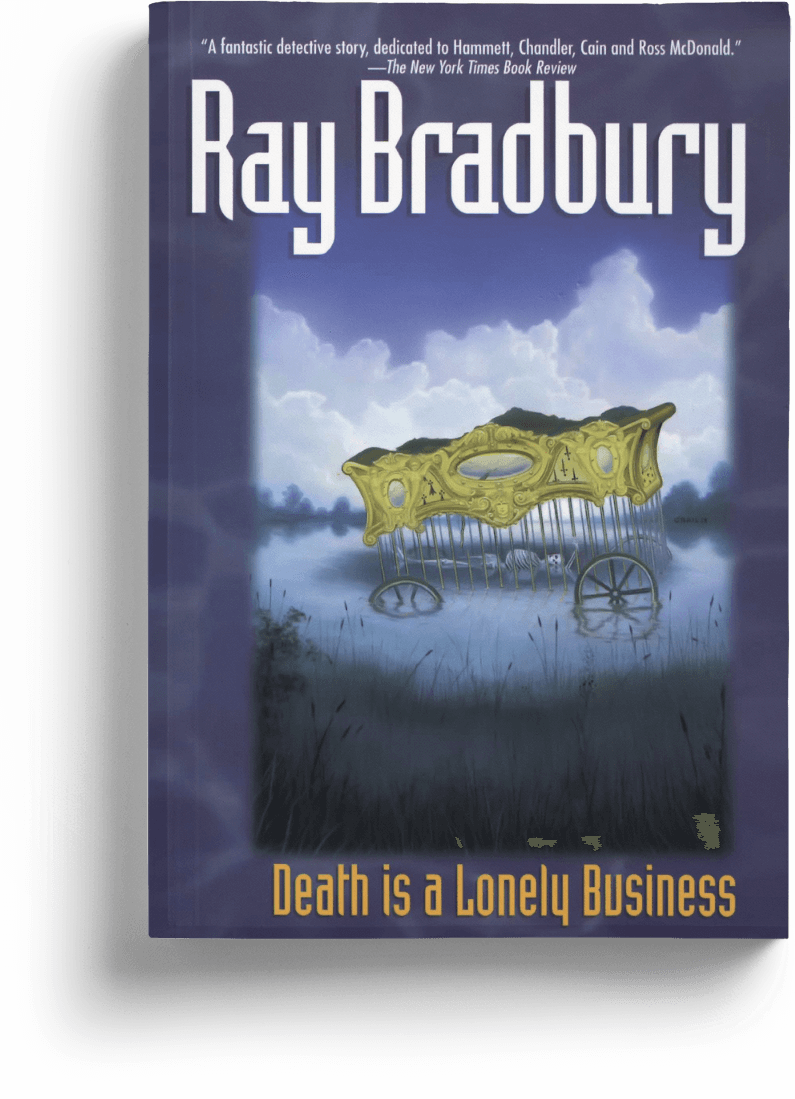
Death Is a Lonely Business
‘I dreaded going back to my apartment bed, which was as empty as an icebox abandoned by the Okies on the way west.
The only thing emptier was my Great American Novelist’s bank account in an old Roman temple bank building on the edge of the sea, about to be washed away in the next recession.’
A killer is roaming the canals of Venice, California, drawing the attention of the unnamed narrator (a struggling young writer), who teams up with a tough but sentimental homicide detective to investigate. As the murders spread to downtown Los Angeles, the narrator realizes that the killer is slaying all of the friends who inspire the characters in his stories. An experiment in autobiography, the novel chronicles the point in Bradbury’s early career when he overcame self-doubt as a writer.
“A fantastic detective story, dedicated to Hammett, Chandler, Cain and Ross McDonald.” —The New York Times Book Review

Zen in the Art of Writing
‘When was the last time you dared release a cherished prejudice so it slammed the page like a lightning bolt? What are the best things and the worst things in your life, and when are you going to get around to whispering or shouting them?’
Through nine exuberant essays (the last including poems), Bradbury explains the rewards of his craft, while sharing his writing wisdom, authors he read and revered in his youth, the treats and tricks of word association, and even how he started his best-selling novel Fahrenheit 451. Each essay shares a single compelling theme: writing is a celebration, not a chore. With each page, Bradbury brings to every reader of this collection the passion and the satisfaction discovered through writing—and ways to sustain both.
“Bradbury, all charged up, drunk on life, joyous with writing, puts together nine past essays on writing and creativity and discharges every ounce of zest and gusto in him. . . . Bradbury lovers will find this a Bradbury feast.” —Kirkus Review
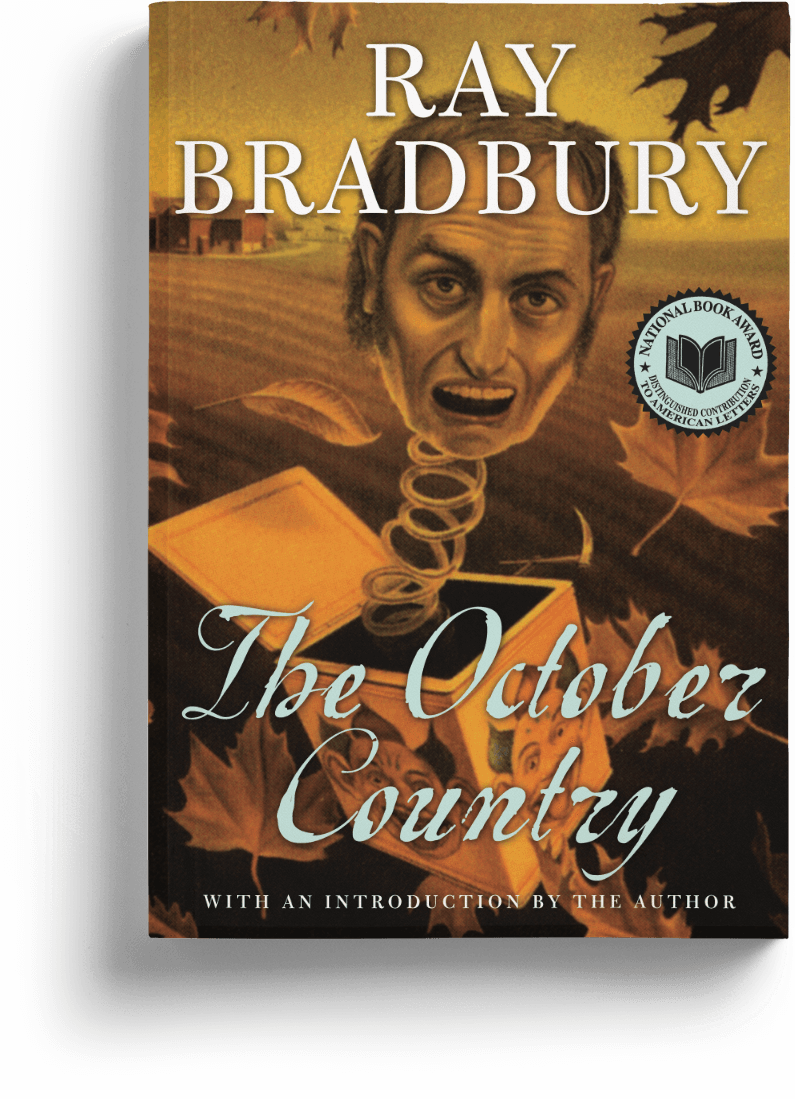
The October Country
‘October Country . . . that country where it is always turning late in the year. That country where the hills are fog and the rivers are mist; where noons go quickly, dusks and twilights linger, and midnights stay. . . . That country whose people are autumn people, thinking only autumn thoughts. Whose people passing at night on the empty walks sound like rain. . . ‘
In 1947, Bradbury’s first collection of stories was published under the title Dark Carnival. Eight years later, he selected fourteen of the original twenty-seven stories, extensively revised them, and added five new ones to make up this tome of the macabre and fantastic. Such favorites as “The Next in Line,” “Skeleton,” “The Small Assassin,” and “Homecoming” are included, as well as introductions to a host of lost souls, meetings with strange emissaries from the graveyard, and many a bizarre circumstance.
“It was his ability to evoke a mood that first endeared Ray Bradbury to the public at large . . . Bradbury’s poetic style. It didn’t matter whether his fantasies made sense: Carried along by Bradbury’s seductive voice, they felt true.” —Los Angeles Times
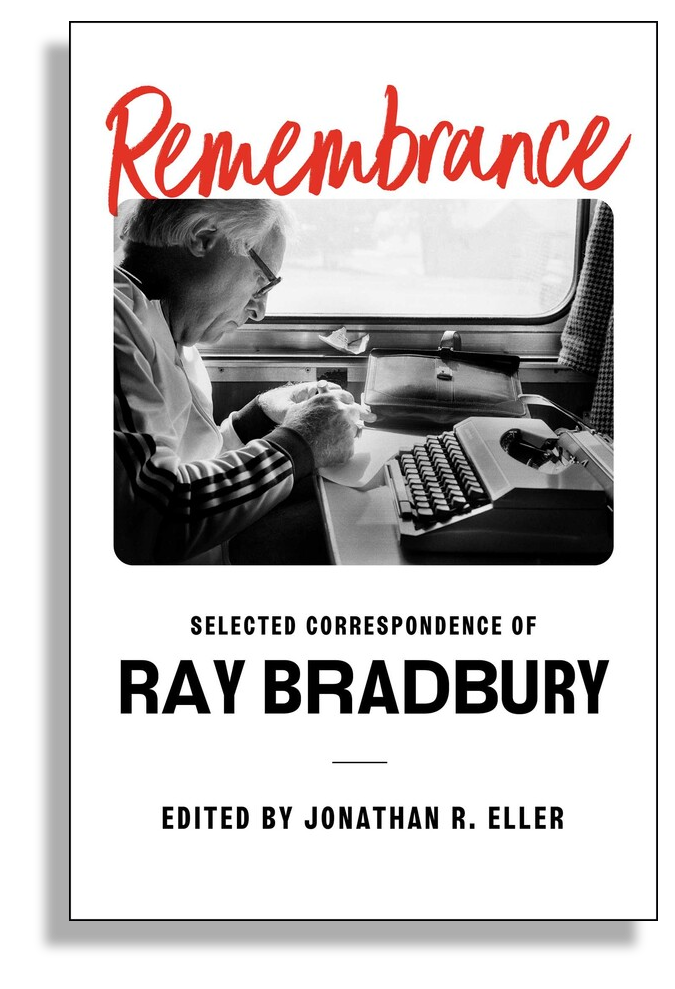
Remembrance - Selected Correspondence of Ray Bradbury
Bradbury explains the writing process, the meaning of imagination, the joys of life, his politics, and his view of the world. Almost always, and this is not surprising given his personality, Bradbury writes with gratitude and joy… I have since childhood believed that Bradbury’s writing exists to make us all better human beings. Eller’s excellent edited collection affirms all that I already believed. — Bradley Birzer, National Review
Remembrance is a true labor of love and belongs in any library that has a Ray Bradbury collection.— Booklist
Bibliography


"You must write every single day of your life... You must lurk in libraries and climb the stacks like ladders to sniff books like perfumes and wear books like hats upon your crazy heads... may you be in love every day for the next 20,000 days. And out of that love, remake a world."
– R.B.
Novels
- 1950 The Martian Chronicles
- 1953 Fahrenheit 451
- 1957 Dandelion Wine
- 1962 Something Wicked This Way Comes
- 1972 The Halloween Tree
- 1985 Death Is a Lonely Business
- 1990 A Graveyard for Lunatics
- 1992 Green Shadows, White Whale
- 2001 From the Dust Returned
- 2003 Let’s All Kill Constance
- 2006 Farewell Summer
Collections
- 1947 Dark Carnival
- 1951 The Illustrated Man
- 1953 The Golden Apples of the Sun
- 1955 The October Country
- 1959 A Medicine for Melancholy
- 1959 The Day It Rained Forever
- 1962 The Small Assassin
- 1964 The Machineries of Joy
- 1965 The Vintage Bradbury
- 1966 Twice 22
- 1969 I Sing The Body Electric!
- 1975 Ray Bradbury
- 1976 Long After Midnight
- 1980 The Last Circus and the Electrocution
- 1980 The Stories of Ray Bradbury
- 1983 Dinosaur Tales
- 1984 A Memory of Murder
- 1988 The Toynbee Convector
- 1990 Classic Stories 1
- 1990 Classic Stories 2
- 1996 Quicker Than The Eye
- 1997 Driving Blind
- 1997 The Golden Apples of the Sun and Other Stories
- 1998 A Medicine For Melancholy And Other Stories
- 1998 I Sing The Body Electric! And Other Stories
- 2002 One More for the Road
- 2003 Bradbury Stories
- 2004 The Cat’s Pajamas: Stories
- 2005 A Sound of Thunder and Other Stories
- 2007 Now and Forever: Somewhere a Band is Playing & Leviathan ’99
- 2007 Summer Morning, Summer Night
- 2009 We’ll Always Have Paris: Stories
- 2010 A Pleasure To Burn
- 2011 The Collected Stories of Ray Bradbury: A Critical Edition – Volume 1, 1938–1943
- 2014 The Collected Stories of Ray Bradbury: A Critical Edition – Volume 2, 1943–1944
- 2017 The Collected Stories of Ray Bradbury: A Critical Edition–Volume 3, 1944–1945
Children’s and Young Adults books
-
1955 Switch On The Night
-
1962 R Is For Rocket
-
1965 The Autumn People (graphic)
-
1966 S Is For Space
-
1966 Tomorrow Midnight (graphic)
-
1972 The Halloween Tree
-
1983 Dinosaur Tales
-
1998 Ahmed and the Oblivion Machines
-
2012 Nemo
Essay collections
- 1989 Zen in the Art of Writing
- 1991 Yestermorrow
Letters
- 2023 Remembrance
Poetry
- 1973 When Elephants Last in the Dooryard Bloomed
- 1977 Where Robot Mice and Robot Men Run Round in Robot Towns
- 1979 This Attic Where the Meadows Green
- 1981 The Haunted Computer and the Android Pope
- 1982 The Complete Poems of Ray Bradbury
- 1987 Death Has Lost Its Charm For Me
- 2001 They Have Not Seen the Stars
- 2002 I Live by the Invisible
Plays
- 1947 The Meadow: Radio Play
- 1947 The Meadow: Stage Play
- 1953 The Flying Machine: A One-Act Play for Three Men
- 1963 The Anthem Sprinters and Other Antics
- 1965 The Wonderful Ice Cream Suit and Other Plays
- 1965 A Device Out of Time: A One-Act Play
- 1966 The Day It Rained Forever: A Comedy in One Act
- 1966 The Pedestrian: A Fantasy in One Act
- 1972 Leviathan ’99: A Drama for the Stage
- 1975 Pillar of Fire and Other Plays for Today, Tomorrow, and Beyond Tomorrow
- 1975 Kaleidoscope
- 1976 That Ghost, That Bride of Time: Excerpts from a Play-in-Progress Based on the Moby Dick Mythology and Dedicated to Herman Melville
- 1984 Forever and the Earth
- 1986 The Martian Chronicles
- 1986 The Wonderful Ice Cream Suit
- 1986 Fahrenheit 451
- 1988 Dandelion Wine
- 1988 To The Chicago Abyss
- 1988 The Veldt
- 1988 Falling Upward
- 1990 The Day It Rained Forever
- 1991 Ray Bradbury on Stage: A Chrestomathy of His Plays
- 2003 Something Wicked This Way Comes
- 2010 Wisdom 2116 (US) or Ray Bradbury’s 2116 The Musical (UK)